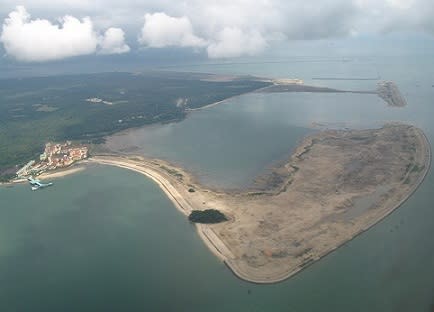Let’s not be Hazy on Environmental Issues
The issue of transboundary haze is part of a larger environmental challenge that Singapore faces in this century. How has our environmental track record been? Is Singapore doing its part in protecting the environment?
Indonesian Environment and Forestry Minister Siti Nurbaya Bakar’s comment that Singapore should focus on its own role in the transboundary haze issue has been greeted with anger by Singaporeans online. The reaction is understandable – after all, the forest fires that cause the haze are happening on Indonesian land. The lack of resolution after many years, coupled by the mixed signals sent by the Indonesian government, may make it seem like our neighbouring country is not serious enough about tackling the problem.
Nevertheless, putting aside our emotions, there is perhaps a kernel of truth in the Minister’s statement. Should Singaporeans not do our part for the environment as well? The haze is only one part of a larger environmental challenge that we must face in this century. In that light, what is our environmental record like? Have we been we doing enough?
Our founding Prime Minister Lee Kuan Yew once famously proclaimed that “poetry is a luxury [Singapore] cannot afford”. This ideology of pragmatism has served the economy well, bringing Singapore from a third world backwater to first world oasis in 50 years. However, economic progress has not come without its costs, especially to the environment.
Rapid development and increased pressure for land usage has led to Singapore losing 90% of its forests, 67% of its birds, 40% of its mammals and 5% of its amphibians and reptiles since 1980, according to Professor Navjot Sodhi from the department of biological sciences at the National University of Singapore (NUS). In a study by NUS on the relative environmental impact of countries, Singapore was ranked the worst environmental offender among 179 countries. In response, however, the Government argued that the ranking is unfair, citing Singapore’s “unique circumstances” due to its “limited land size” and consequent “high intensity of land use”.
The environmental impact of Singapore’s rapid development extends beyond our shores too, as a result of the nation’s ambitious land reclamation. To procure the amount of sand required to expand Singapore’s shores by 22% since independence, Singapore has become one of the largest importers of sand in the world, importing 517 million tonnes in the last 20 years alone. Most of this sand was sourced from Indonesia and Malaysia until both counties enacted a ban due to the environmental impact of procuring the sand on their countries – Indonesia saw 24 islands disappear. Sand dredging in Cambodia has also threatened its coastal environments, endangered species and destroying the livelihoods of fishing villages.

Singapore’s land reclamation projects have a large environmental impact. (Photo: Helen)
So far, Singapore’s record seems less than stellar. That being said, our country has embarked on numerous projects to improve its environmental protection efforts.
As early as two years after our independence, the late Mr Lee introduced the concept of the Garden City. While it was rooted in pragmatically economic reasons (a city with lush greenery would attract investors), the effect on the environment was significant – 1.4 million trees were planted in Singapore by June 2014, and the area of park and green spaces increased from 879 hectares in 1975 to 9707 hectares in 2014.
Carrying out a change of plans to protect the environment is not something foreign to the government either. The Sungei Buloh Wetland Reserve today sits on land that was initially slated for redevelopment, before the Nature Society convinced the government to gazette it as a nature reserve. Similarly, plans in the early 1990s for a 36-hole golf course to be built on Central Catchment Nature Reserve (CCNR) land was scrapped after pressure from the Nature Society and public opinion.
Where will we go from here? In 2015, Singapore pledged at the United Nations Framework Convention on Climate Change its commitment to combat climate change by reducing emissions. Our future efforts in protecting the environment will go a long way in helping us fulfil this pledge.
One example is the decision of whether to proceed with building the new Cross Island MRT Line (CIL) across the CCNR. Like in previous decisions, the plans can be altered to preserve the environment. Doing so would show Singapore’s commitment to all aspects of environmental protection and will be one step further in maintaining Lee Kuan Yew’s vision of a Garden City.
Top photo: View of Pulau Bukom’s refineries from the idyllic setting of Sentosa Island, Reuters
Disclaimer: The opinions expressed in this publication are those of the author’s and do not reflect the opinions or views of Inconvenient Questions or its editorial team.
About the author:
Jonathan Tan is a student from the NUS Communications and New Media department. He wrote this article part of a project with IQ.


